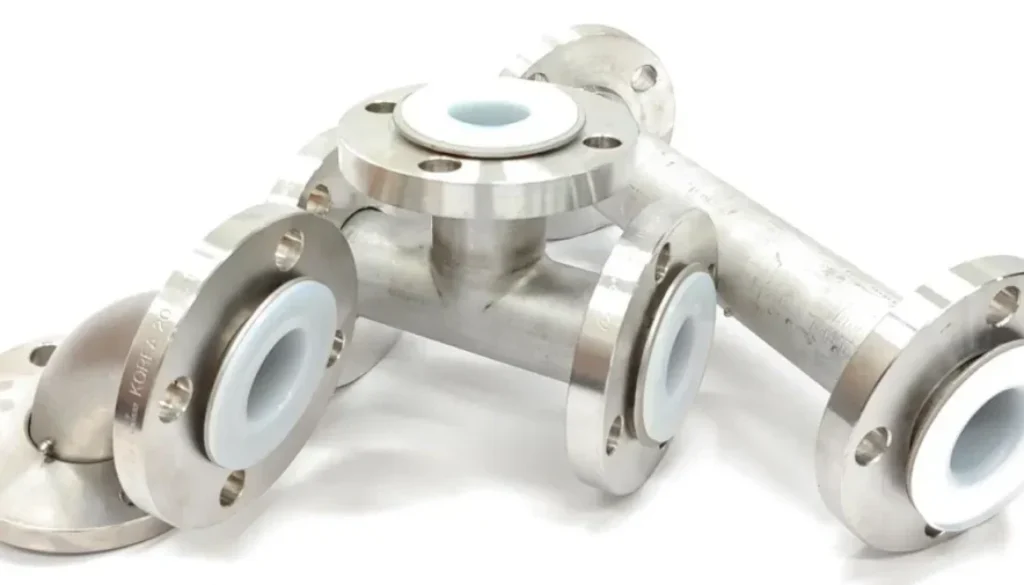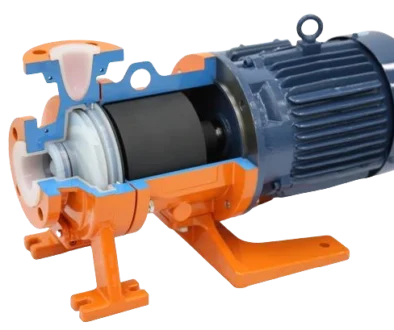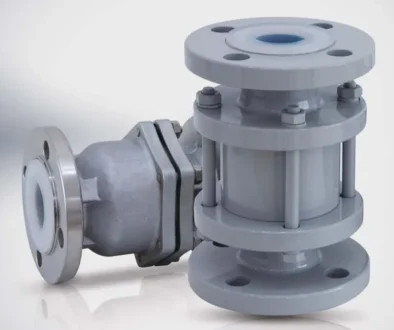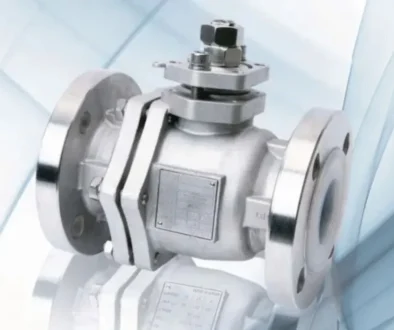Lined Pipes: A Durable Solution for Corrosive Environments
What Are Lined Pipes, and Why Is It Used?
Lined pipes refer to a specialised product in which a metal pipe, commonly carbon steel or stainless steel, is internally lined with a corrosion-resistant material. This design combines the mechanical strength of steel with the chemical protection of advanced liners, making it ideal for handling aggressive or hazardous fluids in industrial settings.
Common Lining Materials in Piping Systems
- PTFE (Polytetrafluoroethylene) – aka Teflon, offers exceptional chemical resistance, non-stick properties, and temperature tolerance.
- PFA (Perfluoroalkoxy alkane) – similar chemical durability to PTFE, but more flexible and easier to fabricate.
- Glass or Ceramic – fused to steel at high temperatures, creating rigid, seamless barriers.
- Other options: ECTFE, FEP, PVDF, PP, HDPE, UHMWPE, PEEK, depending on application needs.
How Are Lined Pipes Manufactured or Applied?
Lined piping production varies by material:
- PTFE/PFA liners are typically extruded, moulded, or paste-extruded and mechanically locked into the pipe by flaring. Sintering then creates a robust, seamless lining.
- Glass liners are fused to the steel wall at high temperature, resulting in a durable, leak-tight barrier.
- Quality control may include hydrostatic testing (e.g., 24 bar for 3 minutes), spark testing for electrostatic integrity, and mechanical property checks.
Key Benefits of Lined Pipes in Corrosive Service
Lined piping systems offer clear advantages:
- Spectacular corrosion resistance, even to strong acids, alkalis, solvents, and abrasive media.
- Extended service life, reducing downtime and maintenance costs.
- Safer operation, preventing leaks or failures in harsh duty.
- Smooth internal surfaces, reducing friction and enhancing flow efficiency.
- Cost-effective alternative to exotic alloys, and mechanically stronger than plastic-only systems.
Performance Comparison: Lined vs Alternatives
| Feature | Lined Steel Pipe | Exotic Alloys | Plastic Pipes |
|---|---|---|---|
| Corrosion Resistance | Excellent | Excellent | Good to excellent |
| Mechanical Strength | Very strong (steel shell) | Strong | Lower |
| Cost (Initial) | Moderate | High | Lower |
| Cost (Lifecycle) | Cost-effective over time | High | Medium to high |
| Temperature & Pressure Tolerance | High (depending on liner) | Very high | Moderate |
Lined piping hits the sweet spot. It brings durability and containment at a sensible cost, outperforming both purely plastic pipes and expensive alloy alternatives over the long run.
Industries and Processes That Rely on Lined Pipes
Lined piping is essential in sectors where corrosion or purity is a critical issue:
- Chemical and petrochemical processing
- Pharmaceuticals and biotech
- Food and beverage (FDA-compliant lining)
- Water and wastewater treatment
- Mining and mineral processing
- Semiconductor and electronics manufacturing
Design and Installation Considerations
Key factors to watch during design and installation are:
- Thermal expansion mismatches between the steel and liner, allowing for flexible joints or expansion loops.
- Vacuum and pull-back resistance uses reinforced ends or controlled flange designs.
- Avoid field bending, which may crack or delaminate the liner.
- Proper joining for accurate alignment, use of compatible gaskets, and even bolt tightening.
- Compliance with relevant standards (e.g., ASTM F1545, ASME B16.5) ensures reliability.
Impact of Temperature, Pressure, and Chemical Compatibility
- Temperature limits: PTFE liners typically operate up to ~260 °C; PFA offers similar thermal resistance, with added flexibility for mechanical stress.
- Pressure ratings depend on steel shell class; liners contribute little structural strength but must tolerate internal pressure and vacuum.
- Chemical compatibility is vital, PTFE and PFA are broadly inert, but verify against the specific fluid and operating conditions.
Maintenance of Lined Piping Systems
Maintenance tends to be straightforward:
- Inspect regularly for cracks, blistering, liner delamination, or flange seal issues.
- Replace worn seals and confirm flanges remain properly torqued.
- If liner damage is severe, relining or full pipe replacement is typically required, on-site repairs are challenging due to the nature of PTFE/PFA liners.
Lined piping systems elegantly combine the toughness of steel with the chemical resilience of high-performance linings like PTFE and PFA. When carefully designed, installed, and maintained, they offer long-lasting, cost-effective performance in some of the most corrosive and demanding applications.




